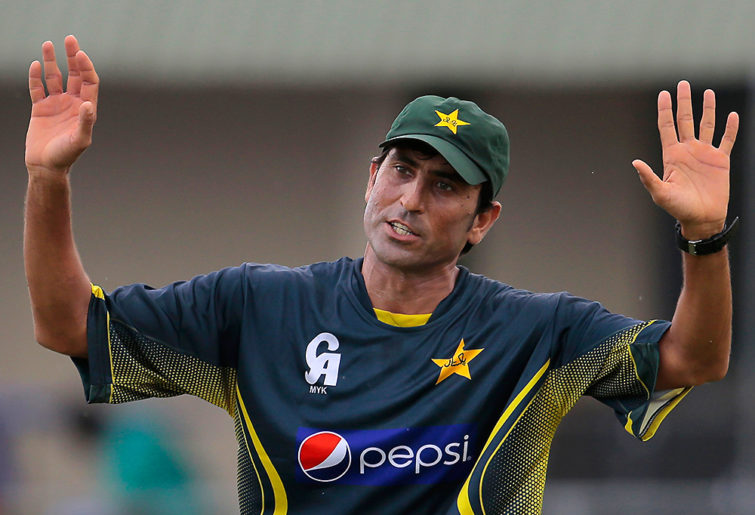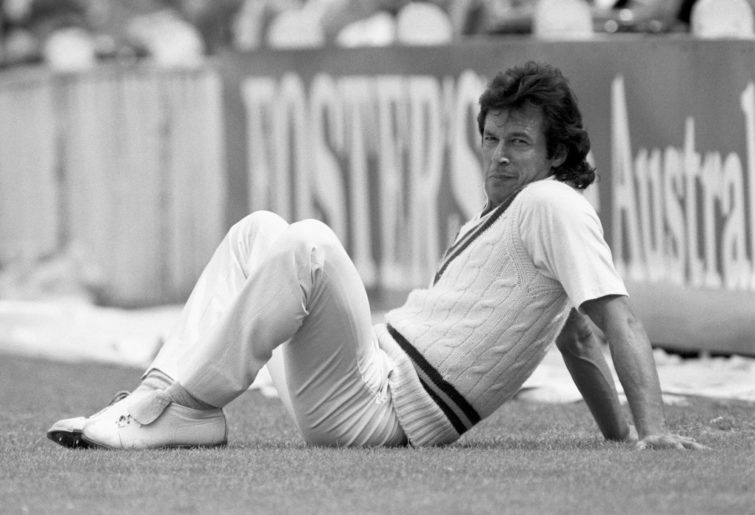The enigma that is Pakistan. A team that is littered with world-class talent and has enjoyed multiple periods of success throughout their history also are a team, it can be argued, who have consistently underachieved. A team that often had the individual brilliance of its players undone by periods of poor discipline and inconsistency.
Pakistan achieved Test status in 1952 though cricket was prominent in that part of the world long before Pakistan even became a nation with an Australian side touring Karachi in 1935. Following independence in 1947 it didn’t take long for the sport to flourish and on July 28th at an Imperial Cricket Conference, Pakistan was awarded Test status.
Their long-standing rivalry with India would commence in October, 1952 with Pakistan touring India for a five-Test series. They would lose their opening game but would hit back strong in the second test to bring up their inaugural Test victory, with Hanif Mohammad and Fazal Mahmood announcing themselves as world-class talents. They would go on to defeat India by an innings and 43 runs.
Pakistan has an interesting historical point with their first-ever home Test actually taking place in what is now a foreign country. In 1955 Pakistan began a home series against India in Dacca, East Pakistan, which is now modern day Bangladesh. The five-match series ended in five draws, the first time in history such an event has occurred.
Pakistan would go on to have periods of success in all formats, reaching No.1 in the ICC rankings in each format. The 1980s through the 1990s was a very strong period for Pakistan. They played 146 matches during that period, winning 60, losing 33 and drawing 53, however only 14 of those draws came during the 1990s.
Over their time as a cricketing nation they have produced some incredible players. A number of imperious and talented batsman, some incredible spin bowlers and bucking the trend of other subcontinent nations they have consistently produced world-class fast bowlers, some of them among the finest to have ever played the game.
A team that at times boggles the mind, enough talent to reach the summit of the game but with a flip of a coin can also produce some amateurish cricket. One of the great enigmas of the sport and a team that has had some entertaining characters.
Hanif Mohammad (Tests: 55, average: 43.98, HS: 337)
The original Little Master, Mohammad played for Pakistan for 17 years and at his peak was considered one of the best batsmen in the world. His highest score of 337 is the highest score by an away player and was a 16-hour marathon innings that allowed Pakistan to hold for a draw against the West Indies despite being forced to follow on trailing by 473 runs.
He also held the highest first class score of 499 for many years.
Gifted with an immaculate defence and a reluctance to hit the ball in the air he was capable of occupying the crease for substantial periods of time. But for all his defensive stoutness he may be the originator of the reverse sweep, highlighting his attacking flair.
Saeed Anwar (Tests: 55, average: 45.52, HS: 188*)
Ying to Mohammad’s Yang, Anwar was an aggressive opening batsman often described as one of the more stylish players of the 1990s. He punished bowlers with stylish drives through the offside with minimal footwork.
His career started with a pair against the Windies but by his third Test he managed to score 169 against New Zealand. He loved the challenge of playing away from home, averaging over 40 in Australia, England and New Zealand and scoring seven of his 11 hundreds away from Pakistan.
Younis Khan (Tests: 118, average: 52.05, HS: 313)
The holder of most Test runs and most Test centuries for Pakistan, Khan is also the only batsman in history to score a century in all 11 countries that have hosted Test cricket. A dangerous middle order player and difficult to remove once he got in, being one of the few batsman who have more Test hundreds than fifties.
While not blessed with the stylish techniques of other Asian batsman he forged his path to becoming one of the modern greats. Always up for a fight and playing in a rear-guard role, in fact out of all the batsman that have over 1000 fourth innings runs he has the highest average.

Younis Khan was on fire for Pakistan against England. (AP Photo/Eranga Jayawardena)
Javed Miandad (Tests: 124, average: 52.57, HS: 280*)
Hailed as the finest batsman Pakistan has ever produced. He became the youngest player to score a century on debut at 19 years and 119 days, then in his third game he became the youngest-ever double centurion. The appetite for runs was never sated as he continued to score 23 Test hundreds in a career where his average never dipped below 50.
He didn’t possess a classical technique but was capable of playing all the shots in the book. He was a tremendous cutter of the ball and always seemed to be able to manipulate the angles to score runs.
Mohammad Yousuf (Tests: 90, average: 52.29, HS: 223)
One of the finest middle order players ever produced by Pakistan.
Yousuf left his mark on Test cricket in 2006, scoring a record 1788 runs at an average over 100 in the calendar year. Yousuf was fantastic to watch with a technique that allowed him to really score big when he got in. He has the third-most hundreds by a Pakistan batsman with 24.
Imran Khan (c) (Tests: 88, average: 37.69, HS: 136; wickets: 362, average: 22.81)
Cool, charismatic and immensely talented, Imran Khan simply is the greatest cricketer the country has produced and one of the greatest all-rounders in the history of the game.
Considered cricket’s heartthrob during the 1970s and ’80s he helped cement not only the popularity of cricket in Pakistan but also fast bowling. Thousands of young Pakistanis wanted to charge in emulating Imran’s pace and mastery of reverse swing. A brilliant captain, his averages increase to 50 with the bat and 19 with the ball during his tenure as Pakistan’s captain.
He had memorable battles with the West Indies, drawing three series with them at a time the Windies were destroying everyone else. His prime years as a bowler from 1980 to 1988, he took 236 wickets at 17, despite losing most of 1983 and ’84 to a stress fracture injury. He has the second-highest average for a batsman batting at No.6 and is the second fastest player to 3000 runs and 300 wickets, achieving the feat in just 75 Tests.

Imran Khan is a giant of Pakistani cricket. (Photo by S&G/PA Images via Getty Images)
Wasim Akram (Tests: 104, average 22.64, HS: 257*; wickets: 414, average: 23.62)
Pakistan’s all-time leading wicket-taker and possibly the best left-arm fast bowler in history. He possessed a complete mastery of swing and seam bowling and possibly the greatest exponent of reverse swing. Despite never quite fulfilling his promise as a batsman he has three Test centuries to his name and the highest score ever by a No.8 batsman.
His career nearly didn’t happen. After missing a spot for his college team he attended trails in Lahore and after two days of not being able to bowl he finally got a chance on the third and Javid Miandad insisted on his inclusion for the national side.
Fazal Mahmood (Tests: 34, wickets: 139, average: 24.70)
Mahmood was Pakistan’s talismanic fast bowler in their beginnings as a Test nation. He was a force in first class cricket in India, being selected for India’s inaugural tour of Australia in 1947-48 but with the independence of Pakistan occurring Mahmood, a Muslim, withdrew and pledged allegiance to Pakistan. He was instrumental in pushing for Pakistan’s Test status.
A prolific bowler, he took 10 wickets on four occasions, three of them occurring for Pakistan’s maiden victories against India, England and Australia. He was the first Pakistani bowler to take 100 Test wickets and in 112 first class games he took 466 wickets at just 18.96.
Wasim Bari (Tests: 81, average: 15.88, HS: 85; catches: 201, stumpings 27)
A gloveman of tremendous class. While most people would agree that Englishman Alan Knott is the finest keeper to play Test cricket, Imran Khan and Knott himself both believe that Bari was the superior gloveman. He has the most dismissals from a Pakistani keeper and second-highest behind MS Dhoni amongst subcontinent keepers. He still holds the record for most dismissals and catches in an innings.
Waqar Younis (Tests: 87, wickets: 373, average: 23.56)
Armed with blistering pace, the ability to reverse swing the ball and a devastating yorker, Waqar at his prime was one of the most devastating bowlers who have ever lived. He has the second-best strike rate for any bowler with more than 350 wickets. Unfortunately, injuries would hamper his effectiveness later on his career but not before he became Pakistan’s second all-time leading wicket-taker.

Wasim Akram (left) and Waqar Younis were an all-time great bowling duo for Pakistan in Test cricket. (Photo by Neal Simpson/EMPICS via Getty Images)
Abdul Qadir (Tests: 67, wickets: 236, average: 32.81)
Qadir championed the art of leg spin in era where it was not just considered rare but also obsolete. His mastery of all manner of leg spin including top spinners, googlies and flippers kept the fires burning to inspire the next generation of spinners like Shane Warne. He holds the best figures by a Pakistan bowler with 9-56.
Not immune from showmanship, on more than one occasion Qadir admitted his extravagant action was in part to distract batters. Qadir deserves his spot as one of the best spinners of his generation and his legacy is even more vital when you consider how he kept the art of wrist spin relevant for the next generation.
12th man: Inzamam ul-Haq (Tests: 120, average: 49.60, HS: 329)
Succeeding Javid Miandad as the key batsman in Pakistan’s lineup, his size made the power he wielded no surprise, and it did nothing to show off his magnificent deftness and touch with the willow in hand. Tremendous exponent of the hook and pull shots and deadly to anything on his legs.
Imran Khan once described him as the best player in the world facing pace bowling. While displaying an almost comical attitude to running between the wickets Inzamam forged a career that took him to the peak of Pakistani batsmen. He became the fifth batsman to score a century in his 100th Test. He was always a big part of Pakistan victories – his average in wins is only behind Don Bradman and Kumar Sangakkara.
Honourable mentions: Misbah-ul-Haq, Zaheer Abbas, Shoaib Akhtar, Saqlain Mushtaq, Yasir Shah
As a cricketing nation the difference between their best and their worst is quite expansive. There is no doubt, however, that Pakistan has produced talent that belongs at the top with some of the greatest to ever take the field. It is little wonder the country possess a near fanaticism akin to their Indian neighbours with a pantheon of legends such as these to inspire them.
Now that cricket has resumed in Pakistan it will be interesting to see if the passion will be rekindled and we see another surge of young exciting Pakistan talent emerging through in the near future.































































































